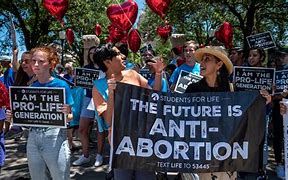
In June, the US Supreme Court ruled that the constitution does not confer the right to an abortion. Now, 13 states have greatly restricted access to the procedure, and about a dozen more are expected to follow suit.
For a high-income country to take such a giant leap towards prohibiting what many people consider a basic human right is nearly unprecedented. Health researchers are scrambling to predict the effects of such changes. Most experts expect that abortions will continue to happen, but will be harder to obtain legally — sometimes requiring extensive travel — and could become less safe.
Less certain are the long-term effects on abortion rates, public health and pregnant people’s economic prospects.
“If people want me to extrapolate from prior evidence to what’s going on now, I don’t think there’s any comparable evidence,” says sociologist Jonathan Bearak at the Guttmacher Institute, a policy group in New York City focused on sexual and reproductive health rights.
As the United States hurtles into the unknown, evidence suggests that enacting abortion restrictions will create substantial burdens, both for people seeking abortions and for the clinics that continue to offer these procedures.
Evidence from around the world suggests that restricting abortion doesn’t put an end to it. In fact, sometimes the opposite is true. Bearak and Bela Ganatra, a behavioural scientist at the World Health Organization (WHO) in Geneva, Switzerland, and their colleagues compiled 2,415 data points, including survey results and health records, to estimate the number of unwanted pregnancies and the rate of abortions in 195 countries and territories around the world.
The analysis found that high-income countries where abortion is broadly legal have the lowest rates of abortion.
Middle-income countries were particularly telling in this analysis: their rates of unintended pregnancies were similar, irrespective of the legal status of abortion in the country. However, restricting access seems to cut the rate of abortion by only about 25 per cent.
“It’s not that people’s reproductive intentions change when you put in restrictions,” Ganatra says. “They will try to do what they’ve decided to do.”
Caitlin Myers, an economist at Middlebury College in Vermont, maintains a database of facilities that provide abortion services. The average travel distance for those seeking care at a clinic in the continental United States doubled, to around 80 kilometres, just two weeks after the Supreme Court overturned Roe v. Wade, the 1973 decision that had protected the legality of abortion.
If all states that are at high risk of banning abortion do so, this distance is expected to increase to about 217 kilometres.
If this situation comes to pass, roughly 24 million women between the ages of 15 and 44 will see increases in travel distance in excess of 160 kilometres, according to the data Myers has collected. That’s more than one-third of the people in that demographic.
- A Nature report











